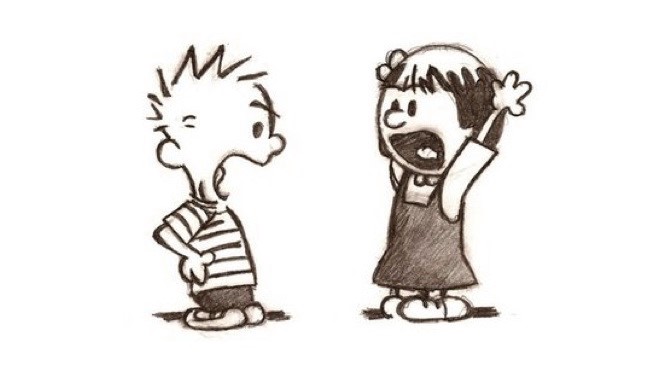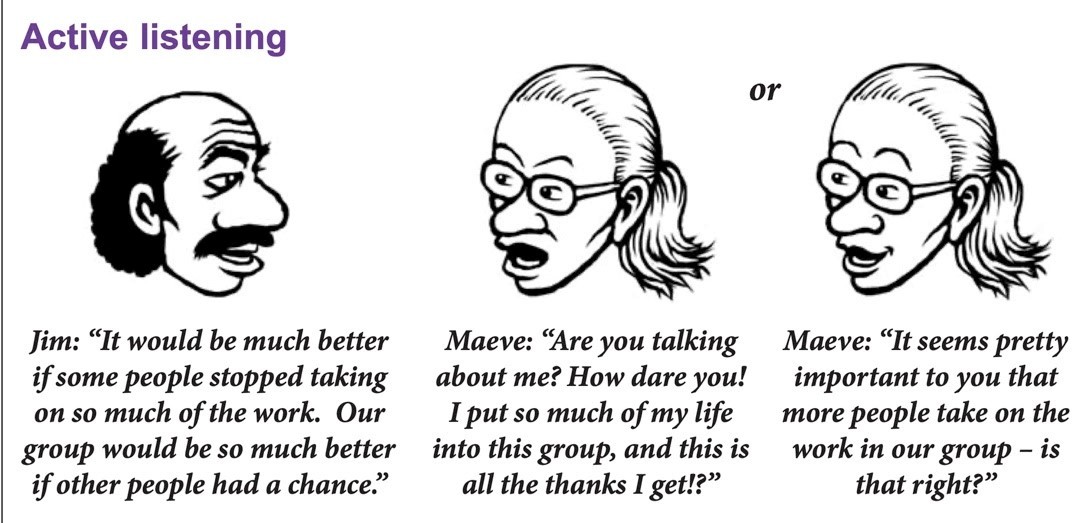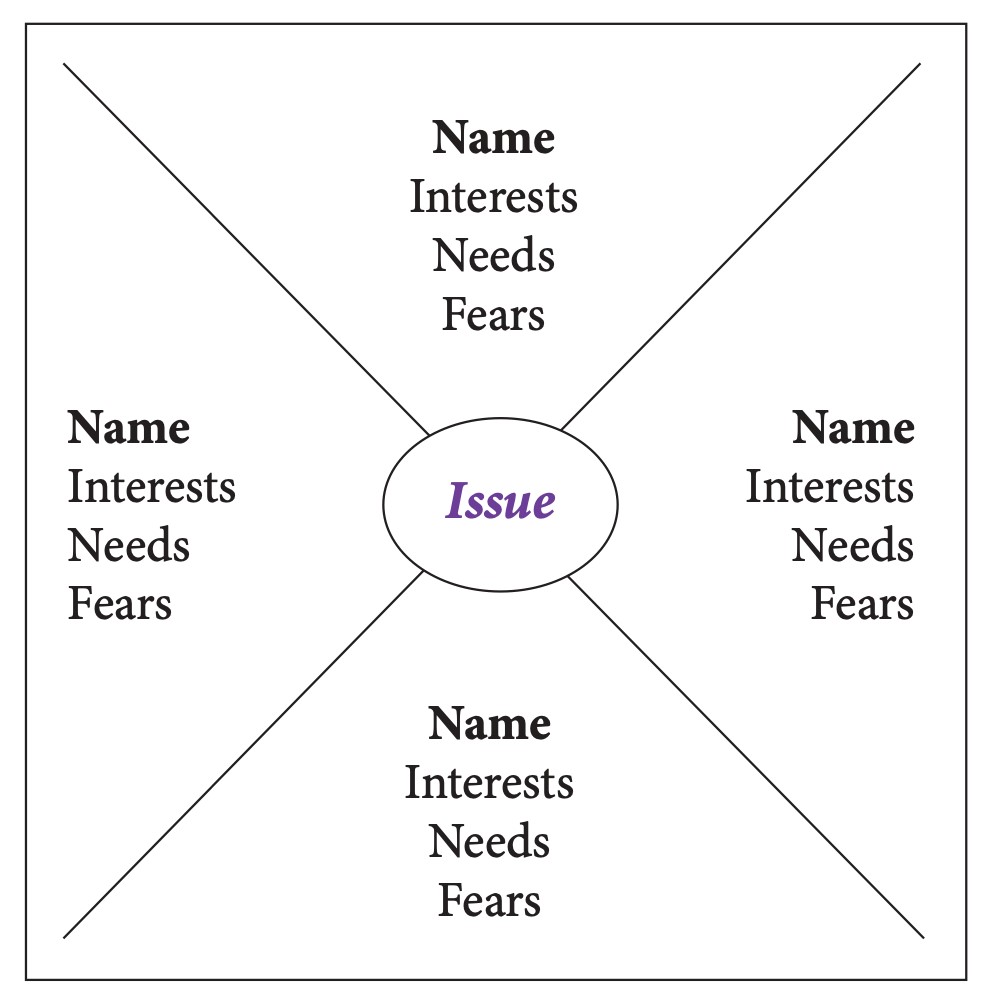How to deal conflict in your groups
Every group and relationship experiences conflict, regardless of whether we are trying to bring about a revolution or play dominoes on the street. It’s simply part of being human, it’s also a particular feature of living in a world which is more mobile. Humans used to live in largely homogeneous groups, whereas today many different world-views and cultures are present in our communities.
So, it’s no surprise that so many of us struggle to collaborate with each other and then have difficulties finding a healthy way through conflict. Conflict is bound to happen while we unlearn old habits and develop new skills and awareness to work cooperatively and challenge oppression.
This guide is aimed at people and groups working for social change who want to develop an understanding of conflict and how to deal with it. There are sections on what conflict is, the benefits of addressing it, and tools to work through conflict and maintain healthy and effective social change groups.
What is conflict?
Conflict often be signalling:
- That some needs are unmet
- The power and/or trust to care for all the needs involved is not currently within reach
- Change is emerging
- Our relationships, agreements, understanding of what we are trying to do, ways of sharing power, and social systems, may need to evolve.
Conflicts are often painful, distressing, frustrating and destructive. Our personal, social and historical experiences of it are usually negative and traumatic. And so, we want to find a better way of navigating tension, conflict and disagreement because how we respond to it shapes whether conflict will tear us apart, or change, evolve and strengthen us.
5 Stages of Conflict:
1 - Discomfort
A little niggle that tells you a conflict might be brewing.
2 - Incident
A minor clue that acts as evidence of the growing conflict.
3 - Misunderstanding
The situation has escalated to a degree that one or both parties have developed false assumptions about the other.
4 - Tension
The clues here are much more obvious. This could be an argument, an emotional outburst, or out-of-character behaviour.
5 - Crisis
Breaking point for the relationship. By this stage all communication will focus on the conflict.
Why deal with it?
Conflict isn’t a problem - it’s an opportunity
Conflict can help us grow - in ourselves, in our relationships with others and in how we work together, in our groups and systems, and in getting clearer on the purpose that we share. We see a lot of conflict as offering an opportunity to evolve and build our collective power.
Understanding our conflicts and working through them can be a deeply empowering process for everyone involved. It can be hugely energising to find a way to connect with people you have a conflict with, and find a way through the conflict that everyone can live with instead of pretending it’s not there. Imagine you’re part of a group where people communicate honestly with each other, where everyone knows their own feelings, where there is a sincere desire to understand differences between people in the group, and to find solutions that are genuinely satisfactory for everyone.
Groups with a healthy approach to conflict will be better prepared to go the long haul together, and are better able to effectively bring about social change. Clear communication and trust for each other enable groups to make better decisions which takes into account more points of view. It also saves the time and energy that is sometimes spent on avoiding conflict.
Methods of Handling Conflict
Good communication
In this section, we’ll explore what we can do to minimise conflict with others and deal with it effectively before it escalates. We will be looking at tools and skills to improve communication that will help to de-escalate a conflict.
Empathy Circles
An Empathy Circle is a structured dialogue process based on mutual active listening. The process increases constructive dialogue and mutual understanding by ensuring that each person feels fully heard to their satisfaction.
Process:
- The first person selects who they will speak to
- They speak about whatever comes up for them for a set time (3-5mins)
- The listener reflects back what they are hearing until the speaker feels heard and understood to their satisfaction
- Then it is the listeners turn to select who they will speak to and for that new listener to reflect back what they are hearing
- Everyone helps hold the circle process by monitoring and sticking to the steps.
Nonviolent Communication
Nonviolent Communication can help process tensions in a way that supports honesty with care and creates conditions for connection and better collaboration.
A simple way to do this is to:
- State the issue you observe
- Highlight how it made you feel
- Say what you need to be able to work well
- Make a request of the other person
Here is a good resource to learn more about how to do this: Guide to 4 part NVC Process (PDF)
Active Listening
Active listening is about suspending our own thought processes and making a conscious effort to understand another person’s perspective.
Try this exercise for practice:
Practice in threes. You’ll need two people to practice this. Each take a role - speaker, listener or observer.
- The speaker speaks for about 2 minutes on a topic of their choice, the more controversial the better!
- The listener actively listens and then summarises the key ideas and any emotions they observed, as succinctly as possible (1 minute).
- The observer also actively listens and gives constructive feedback to the listener on their summary and anything they missed.
- The speaker then has a chance to say how it felt and to comment on the listening.
- Keep switching roles until everyone has had a chance to try each role.
Practical Steps
Creating Group Agreements
Creating Conflict Group Agreements will help to figure out how the group will handle conflicts and tensions when they inevitably arise.
These could include:
- An intention to ‘lean into conflict’, treating it as potentially transformative rather than something to run away from.
- An agreement of a clear method and space for raising and processing tensions within your group.
- A shared understanding about what to do if a conflict occurs and where to go for help.
- An intention to use Nonviolent Communication and short feedback loops to process tensions quickly and non-judgmentally. (Short feedback Loops are when you tell someone that you have a tension with their role or their behaviour quickly after the tension occurs).
Conflict Mapping
Use this tool when your group wants to get a clearer picture of the issues that are underlying the conflict situation. It helps your group to map out the underlying needs and fears of each person involved in the conflict and to find common ground. It’s a structured way of moving forward in a conflict that is much easier to facilitate than an open discussion.
This tool could be facilitated by someone in your group, including someone directly involved in the conflict (as long as they feel able to stay neutral when encouraging others contributions), by a neutral friend or external facilitator.
Materials: a large piece of paper e.g. flip chart or a roll of wallpaper and some marker pens.
Step 1: What’s the issue?
In the middle of the paper write down what the issue is. Aim for neutral and unemotional language and try to keep it an open-ended statement.
Step 2: Who’s involved?
Decide who the people involved in the conflict are and draw lines on the paper so that each of them has a segment of the paper. (E.g. if the conflict seems to be between two members of the household, then give each of these people a segment of the paper). Also give one segment to the other members of the coop together, provided they have substantially the same needs in this situation.
Step 3: What do they need? What do they fear?
Ask each person in turn what their wants, needs and fears are. Discourage others from interrupting. Write the wants, needs and fears down on their segment of the paper.
Try asking questions like: “Your solution to the problem is to do... What needs of yours will this meet?” to help people get to these underlying interests and needs. The list of needs will be more helpful if the words or phrases are specific, so words like “respect” or “understanding”.
Fears are concerns, anxieties or worries that someone has that are relevant to the problem e.g. being judged or criticised, fear of failure, doing the wrong thing, loss of face.
Step 4: Reading the map
Invite everyone to look at the map and consider others’ wants, needs and fears that they hadn’t taken into account before. Mapping the needs helps us to see what it’s like to be in another person's shoes. C ommon ground -The map may also show where the common ground is within the group with some values and needs showing up in each segment. The map can also help start a conversation to build new areas of common ground, for example where one person has mentioned a need that others have not mentioned during the mapping, but can also share,
Step 5: Looking for new solutions
You’ve created the map and seen everyone’s needs, now comes the creative part, looking for solutions that meet those needs. After the more analytical mapping phase you might want to play a game or move to a new room or change seats before you start this step. Use an ideastorm to collect ideas. This is a quickfire creative thinking activity designed to gather as many ideas as possible. It also allows people to spark off each other in an uncritical environment.
How to run the exercise:
- Give people a few minutes to reflect on their own. Ask them to think of potential solutions that would meet everyone’s needs.
- Ask people to say their ideas for solutions that will meet everyone’s needs. Let them know that all ideas are welcome, however silly they may seem.
- Write all the ideas on a large sheet of paper (flipchart, wallpaper etc).
- Remind people that this isn’t the space for critiquing the ideas – you’re just gathering them now, and assessing them will happen later.
- If the group runs out of steam, rephrase what you’re looking for and give them a chance to come up with more ideas – there’s often a second wind, so don’t be afraid to ride out the silence.
Step 6: Choosing the most suitable option
When you have some possible solutions, bring the ideastorm to a close. Help the group find the best solution. It may already be clear that one solution fits the bill.
If not, see if it helps to rate each of the solutions using this scale: 1. very useful; 2. lacking some elements; 3. not practicable.
Other questions to explore might be: Is it feasible? Is it enough to solve the problem? Does it satisfy everyone’s needs adequately? Is it fair? Do you think you can live with it? Sometimes if the problem seems huge, you might not be able to find a solution for the whole thing, but you can solve parts of it. It doesn’t fix it, but it helps make it more manageable.
Step 7: Implementing the plan
It can be easy to come to a decision and then forget to work out how you will make it happen. Questions to ask include: What has to be done? Who will do what? When will each task be completed? Maybe timetable a review to check that it’s all happening.



